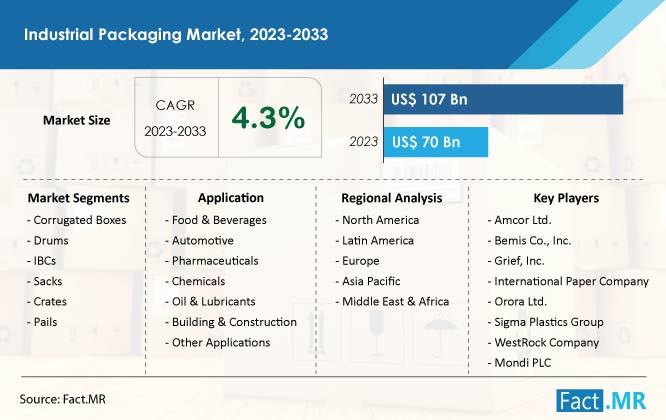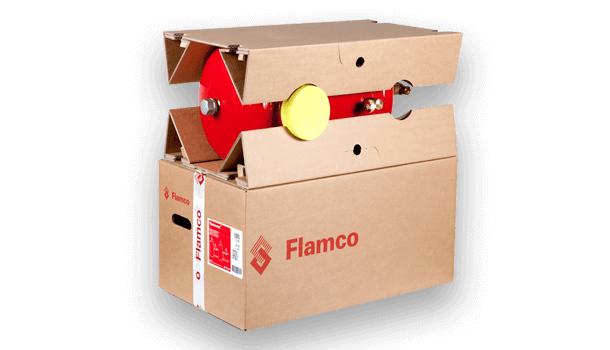Reliable Industrial Recycling Solutions for Lasting Packaging: A Comprehensive Overview
In today's progressively environmentally-conscious world, the demand for lasting product packaging options has actually never been greater. To fulfill this demand, services throughout markets are actively looking for effective commercial recycling remedies. Nevertheless, browsing the facility landscape of sustainable packaging can be challenging without a detailed overview. That's where this comprehensive overview on efficient commercial recycling options for lasting packaging comes in. By exploring key areas such as packaging product choice, creating for recyclability, executing recycling infrastructure, working together with recycling partners, and tracking and measuring reusing success, this guide will outfit you with the understanding and devices required to make educated decisions and drive positive change within your organization. Whether you're a product packaging professional, sustainability manager, or simply thinking about the topic, this guide will certainly give important understandings and strategies to aid you navigate the world of lasting packaging.
Product Packaging Material Choice
The selection of packaging materials plays an essential function in ensuring the sustainability of commercial recycling options. The choice of materials is crucial in minimizing environmental effect and taking full advantage of reusing efficiency when it comes to lasting packaging. Choosing the best materials can help reduce waste generation, conserve resources, and promote a circular economy.
Materials like cardboard, paper, glass, and certain types of plastics can be reused numerous times without losing their high quality. On the various other hand, materials that are difficult to reuse, such as mixed plastics or non-recyclable compounds, can develop challenges for the reusing procedure and may end up in garbage dumps or incinerators.
One more consideration is making use of eco-friendly and biodegradable materials. Packaging made from renewable resources, such as plant-based plastics or biopolymers, can assist decrease dependency on fossil gas and reduce environment adjustment. In addition, naturally degradable materials damage down naturally in time, minimizing the accumulation of waste in garbage dumps.
Furthermore, the weight and volume of product packaging products ought to be lessened to lower transport prices and energy usage. Lightweight products not only require fewer resources throughout manufacturing but additionally add to reduce carbon discharges throughout transportation.
Creating for Recyclability
Product packaging designers should prioritize the use of products that are commonly approved for recycling and have actually developed reusing infrastructures. Products such as glass, aluminum, and particular types of plastic, like Family pet and HDPE, are commonly reused and ought to be favored over products that are costly or challenging to reuse.
Another crucial factor to consider in developing for recyclability is the removal of unneeded components or materials. By decreasing the variety of layers, coverings, and extra elements, packaging can be made less complex and simpler to reuse. In addition, developers should intend to reduce making use of blended materials, as they can complicate the reusing process.

Implementing Recycling Facilities
Efficient application of reusing infrastructure is essential for the success of commercial recycling remedies. Without proper infrastructure in area, the reusing procedure becomes ineffective and ineffective, hindering the overall objective of sustainable packaging.
To execute recycling framework properly, numerous key variables need to be taken into consideration. First of all, there must be an efficient collection system that promotes the splitting up and collection of recyclable products. This can consist of designated reusing containers in public spaces, along with collaborations with waste monitoring Get More Info companies for curbside pickup and sorting.
When gathered, the recyclable products require to be delivered to reusing centers in a timely fashion. This needs efficient logistics and transportation networks, making sure that the materials get to the proper facilities immediately.
At the reusing centers, advanced sorting and handling technologies ought to be in location to divide different sorts of products efficiently. This includes using automated arranging devices, optical scanners, and manual sorting methods.
Moreover, there must be a durable market demand for recycled materials. This can be achieved via collaborations with producers and markets that utilize recycled materials in their production procedures. Creating a steady market for recycled products incentivizes the recycling industry and promotes the round economic climate.
Working Together With Recycling Partners

One trick facet of teaming up with recycling partners is the establishment of clear interaction channels. It is essential to establish open lines of interaction to assist in the exchange of info, updates, and responses. This allows both events to remain informed regarding the progression of reusing campaigns and deal with any type of challenges or issues that might occur.
Furthermore, partnership can involve collaborations in implementing and designing reusing programs. Recycling partners can provide beneficial understandings and support in developing reliable collection systems and establishing the most appropriate recycling technologies. By interacting, organizations and reusing companions can enhance the recycling process and decrease waste.
In addition, partnership can prolong past the functional facets of recycling. It can additionally include advocacy and education and learning efforts. By joining pressures, companies and reusing companions can raise recognition about the relevance of reusing and advertise the adoption of lasting product packaging methods among consumers and other stakeholders.
Tracking and Measuring Recycling Success
To make certain the efficiency of industrial recycling services and the accomplishment of sustainable product packaging goals, it is crucial for services and their reusing partners to establish a thorough system for tracking and determining recycling success (bulk container recycling). Tracking and gauging recycling success allows businesses to evaluate the influence of their reusing efforts, identify areas for enhancement, and established significant targets for future development
One method to track recycling success is with using information collection and analysis tools. By accumulating data on the quantity of product packaging waste created, the percentage of waste that is recycled, and the sorts of products being reused, organizations can get beneficial insights right into their recycling performance. This data can then be evaluated to recognize patterns, patterns, and areas you could try these out of inadequacy.
An additional important facet of monitoring and gauging recycling success is establishing standard and clear metrics. This enables companies to compare their efficiency against market standards and track their progression over time. Metrics such as reusing prices, waste diversion rates, and greenhouse gas navigate to this site emissions can provide a quantitative action of a business's reusing success.

Conclusion
Finally, applying efficient commercial recycling remedies for lasting product packaging needs mindful factor to consider of packaging material selection, creating for recyclability, implementing reusing facilities, working together with recycling companions, and monitoring and measuring recycling success. By including these practices, services can add to a much more sustainable and environmentally-friendly method to packaging, decreasing waste and promoting the round economic situation.
By checking out vital locations such as packaging product selection, designing for recyclability, executing recycling infrastructure, working together with reusing companions, and tracking and gauging recycling success, this guide will certainly outfit you with the expertise and tools necessary to make informed decisions and drive favorable modification within your company. Product packaging developers must focus on the use of materials that are commonly approved for reusing and have established reusing facilities.Collaboration with recycling partners is important for the successful application of commercial recycling options and the accomplishment of lasting product packaging objectives. By joining forces, companies and recycling companions can elevate understanding about the significance of reusing and advertise the fostering of sustainable product packaging techniques amongst customers and other stakeholders.
By gathering information on the quantity of packaging waste produced, the percent of waste that is recycled, and the kinds of materials being reused, organizations can acquire beneficial understandings right into their reusing performance.